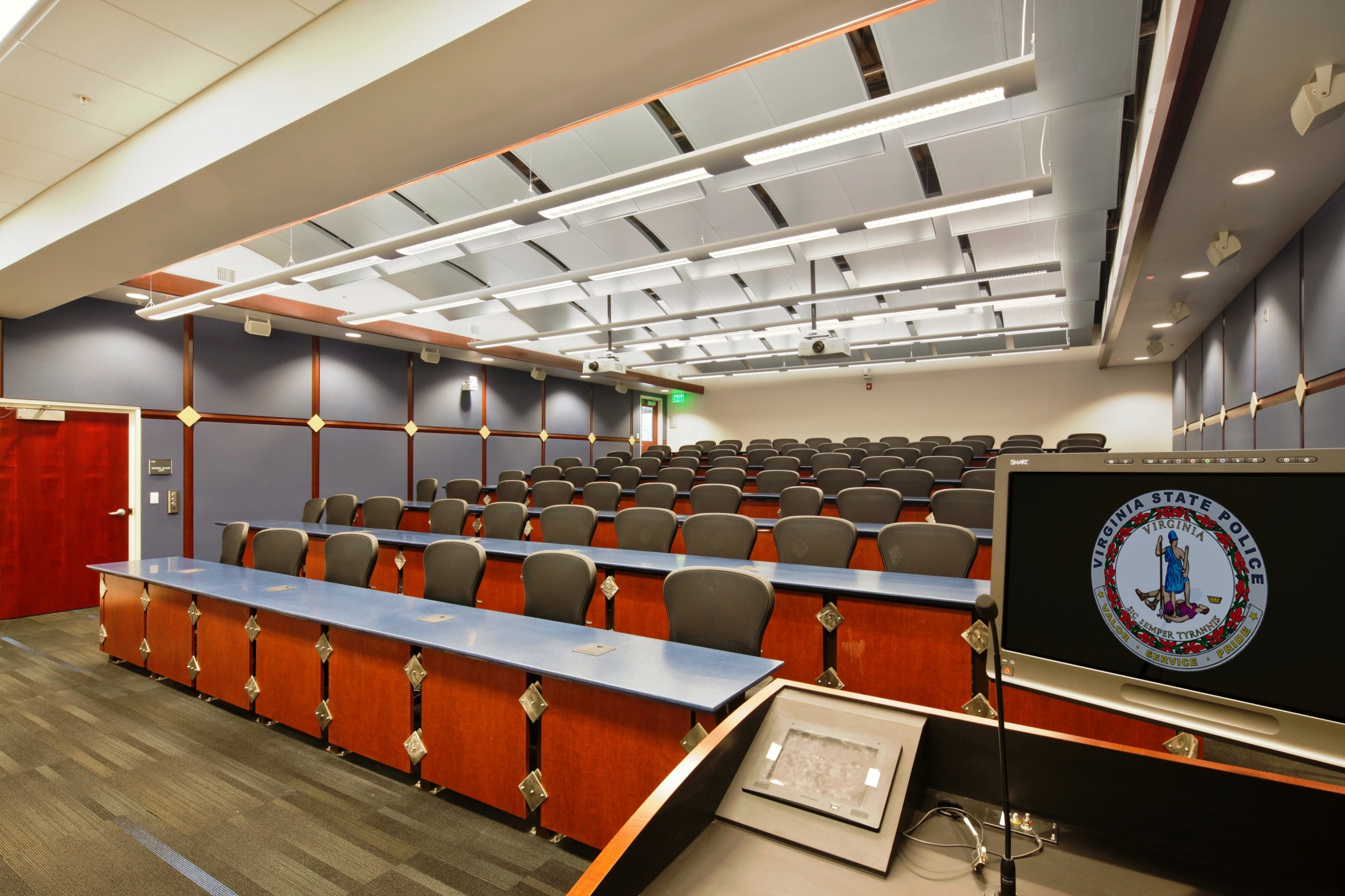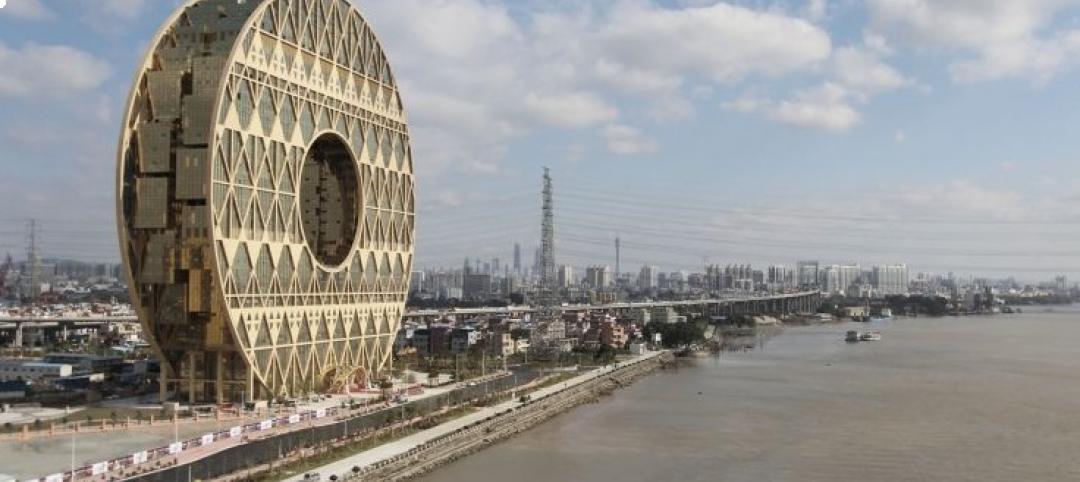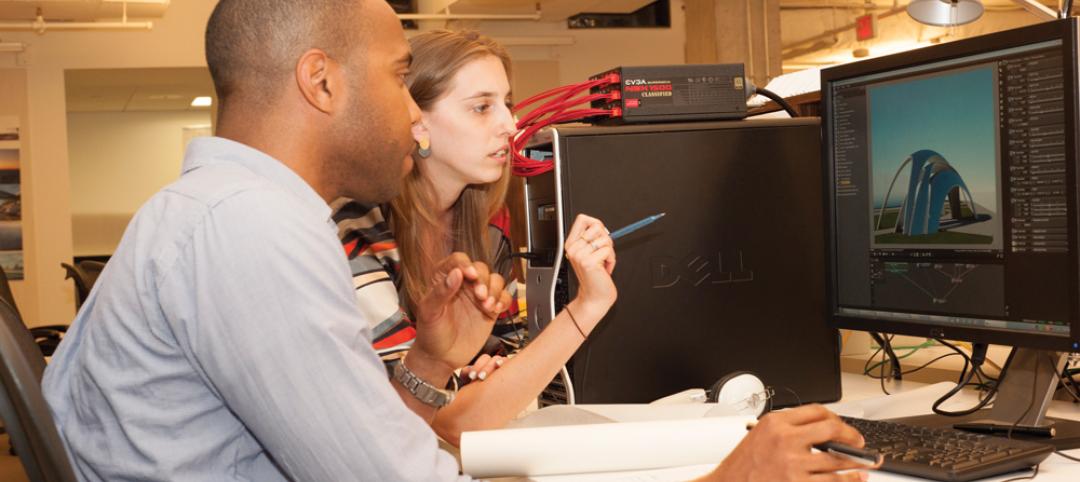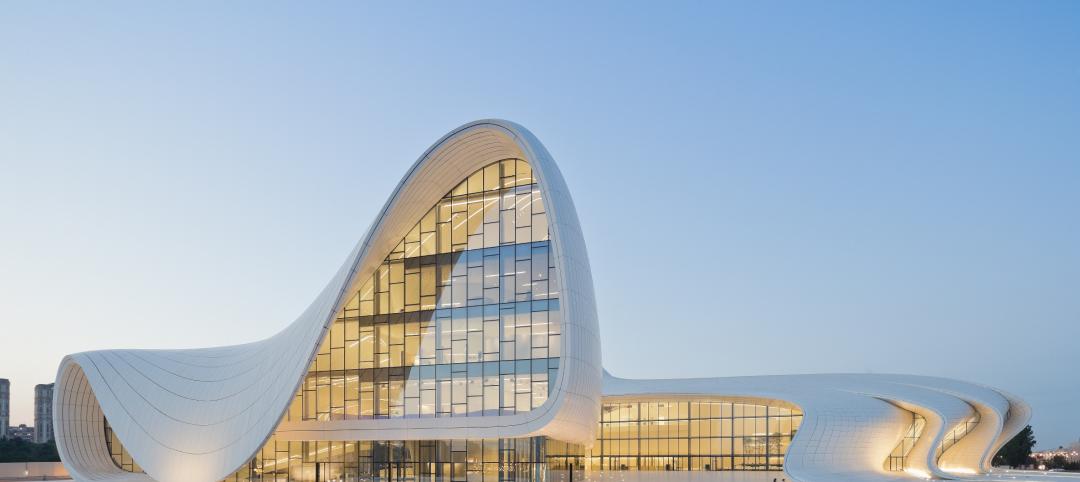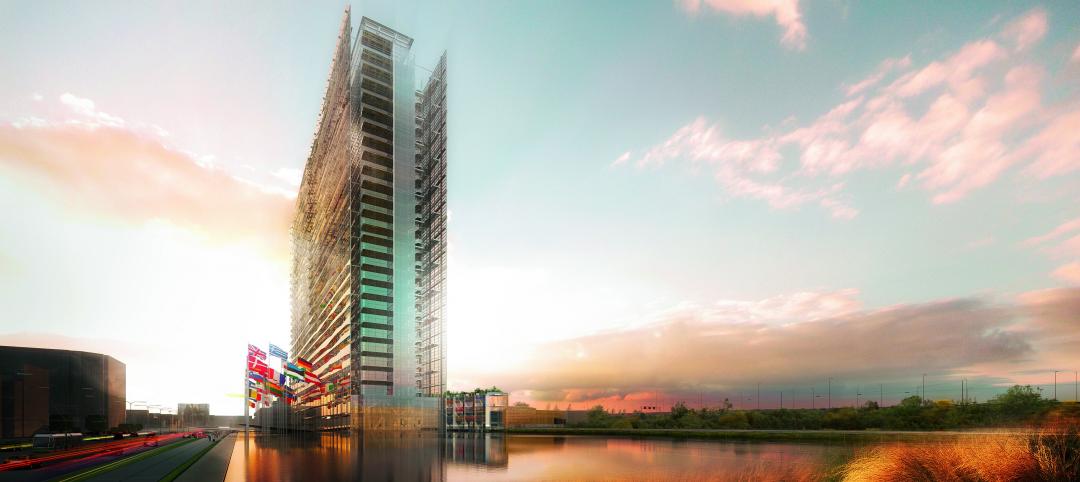The Virginia State Police will soon begin driver training in a new $27.4 million complex set on 680 acres near Fort Pickett, just outside the town of Blackstone. Designed by Dewberry and constructed by KBS Inc., the facility includes 4.5 miles of urban, rural, and interstate roadway courses that simulate Virginia topography; a three-story, 52,000-sf training and dormitory building; an observation tower; and a vehicle maintenance garage.
The new training tracks feature a variety of road configurations, including a cloverleaf ramp, city intersections, interstate acceleration lanes, a roundabout, railroad tracks, a 25,000-sf skidpan, cul-de-sacs, and a 342,000-sf precision-driving course. The facility enables the police to combine behind-the-wheel training with simulations and classroom instruction at one site.
The training building includes 60 squad rooms that accommodate up to 120 cadets, theater-style classrooms, a cafeteria, offices, meeting space, and a driver simulation room with 550 LE Interactive Driving Simulation Systems that model the cockpit of a police cruiser.
Construction of a new firing range is set to begin this spring. The building was also designed to serve as an alternate emergency operations center for the Virginia State Police.
Design of the building combines brick, precast architectural block, and glass curtainwall. “The architecture reflects the modern, state-of-the-art training approach provided by the Virginia State Police, with a streamlined academic aesthetic in the materials and vertical elements,” says Larry Hasson, AIA, who led the architectural design team for Dewberry. In addition to architecture, Dewberry provided interior design and mechanical/electrical, structural, civil, and environmental engineering. +
Related Stories
| Jul 2, 2014
Emerging trends in commercial flooring
Rectangular tiles, digital graphic applications, the resurgence of terrazzo, and product transparency headline today’s commercial flooring trends.
| Jul 1, 2014
China's wild circular skyscraper opens in Guangzhou [slideshow]
The 33-story Guanghzou Circle takes the shape of a giant ribbon spool, with the floor space housed in a series of boxes suspended between two massive "wheels."
| Jul 1, 2014
Hyper-speed rendering: How Gensler turns BIM models into beauty shots in seconds
In search of a fast rendering solution, Gensler looked to the gaming and moviemaking industries for the next breakthrough tool: Octane Render.
| Jul 1, 2014
Zaha Hadid's flowing Heydar Aliyev Center named Design of the Year for 2014
The Design Museum's Design of the Year award has been awarded to Zaha Hadid's Heydar Aliyev Center. Hadid is not only the first woman to win the top prize, but the center is the first architectural project to win the overall competition.
| Jun 30, 2014
Research finds continued growth of design-build throughout United States
New research findings indicate that for the first time more than half of projects above $10 million are being completed through design-build project delivery.
| Jun 30, 2014
Arup's vision of the future of rail: driverless trains, maintenance drones, and automatic freight delivery
In its Future of Rail 2050 report, Arup reveals a vision of the future of rail travel in light of trends such as urban population growth, climate change, and emerging technologies.
| Jun 30, 2014
Work starts on Jean Nouvel-designed European Patent Office in the Netherlands [slideshow]
With around 80,000 sm and a budget of €205 million self-financed by the EPO, the complex will be one of the biggest office construction sites ever in the Netherlands.
| Jun 30, 2014
Zaha Hadid's Iraq Parliament complex design marred with controversy
Zaha Hadid's design for the Iraq Parliament was selected, despite placing third in the original RIBA-organized competition.
| Jun 25, 2014
The best tall buildings of 2014
Four high-rise buildings from multiple continents have been selected as the best of their region. The best worldwide tall building will be announced November 6.
| Jun 25, 2014
AIA Foundation launches Regional Resilient Design Studio
The Studio is the first to be launched as part of the AIA Foundation’s National Resilience Program, which plans to open a total of five Regional Resilience Design Studios nationwide in collaboration with Architecture for Humanity, and Public Architecture.


